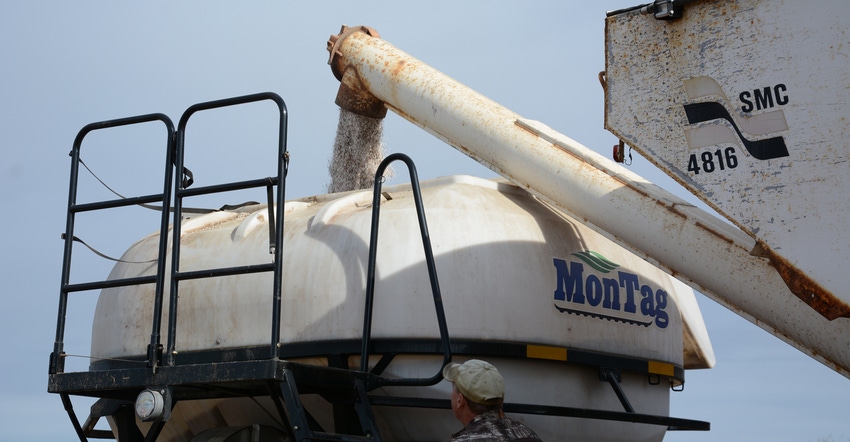September 15, 2020

Dry weather conditions early in the 2020 growing season brought about some issues related to potassium that we have not seen for a few years.
Soil moisture is required for plants to access soil potassium. Dry weather conditions and soils where K is stratified near the soil surface can lead to more prevalent K deficiency with plants on marginal K soils.
Potassium fertilizer guidelines for corn and soybean provided by the University of Minnesota scientists were updated before the 2019 growing season, suggesting higher critical levels for loam and clay loam soils. Suggested K application rates were also adjusted for soybean, particularly for the medium soil test K category (101 to 150 parts per million).
Two research projects are underway to further refine the fertilizer K guidelines for corn.
A study funded by the Agricultural Fertilizer Research and Education Council is trying to determine whether the suggested reduction in the K application rate in current university guidelines is valid. Two trials were established in southern Minnesota at Waseca and near Rochester on field sites where K soil test values varied from low to very high. Observations from the two locations showed greater corn growth early in the growing season where the same rate of K was banded compared to broadcast applied.
Past research has demonstrated a benefit to banding K in reduced tillage situations as it helps maintain K availability deeper in the soil profile if the upper soil surface is dry. Conventional tillage is used in the current studies.
A study funded by the Minnesota Corn Research and Promotion Council began in 2019 to research the impacts of soil chemistry on potential differences in how corn responds to K. One item of interest for this study was how much K was required to maximize grain yield on very sandy soils. Several on-farm trials were established in Minnesota to assess differences in soil chemistry, particularly clay species, across the state. The goal is to study factors such as clay type, cation exchange capacity, and K base saturation and how they relate to corn K response. This study will be continued with additional research sites in 2021.
For growers concerned about application of K ahead of soybean, the new fertilizer guidelines suggest no more than 100 pounds of potash fertilizer be applied in the fall or spring ahead of the soybean crop. If soils test medium or higher, be careful not to apply too high of a K application rate.
Research in western Minnesota has shown a potential to decrease soybean grain yield when higher rates of K are applied directly ahead of the soybean crop. If higher rates of K are needed, err towards applying more K the year when soybean is not grown.
Some questions have been raised about low soil test K values for samples collected over the summer of 2020. Remember, K soil test values will change over the growing season, with the highest K soil tests early in the growing season and the lowest in July, August and September when plants are actively taking up K.
Research from Illinois has found that as much as a 30 parts per million range between the high and low soil K values measured monthly over the growing season. This indicates that samples taken in early June could be vastly different than samples collected in early July. Soil samples taken in dry soil can also lead to variable results.
When collecting soils samples to assess K availability, it is best to collect the samples at the same time every year. If you haven’t been sampling at the same time every year and have recorded variable K data, it may not be time to hit the panic button. Check first to make sure samples taken over time in the same field are comparable (similar sampling location at the same time of year) to better assess long-term soil test trends in your fields.
Kaiser is an Extension nutrient management specialist and Vetsch is a soil scientist with the University of Minnesota.
You May Also Like




